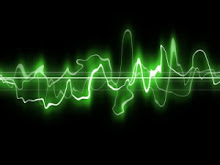I try on this blog to keep my choices of music diverse – partly in the hope that it will keep you reading it and partly because that’s kind of its point anyway: to show the richness and marvel of music in all its variety. And so, if it was a little wayward of me to blog on Iceland’s music both yesterday and the day before, it must be positively mutinous of me to blog again today on the same band that I talked about only a few days ago (see 3rd February): Germany’s Einstürzende Neubauten.
But I’m justifying it on two grounds. First, they are just so good – easily my most significant musical discovery since I first plunged into the music of Björk (there we go – Iceland again) about eight months ago. Second, their latest (2008) album, Jewels, is just so totally different from their first album, Kollaps, the focus of Wednesday’s post, that it’s almost like listening to a different band anyway.
But only almost. There’s still the metallic clang of bits of scrap metal, still the abrasive noise of industrial tools, and still, of course, the endless commitment to experimentation and to creating music out of the unmusical.
But, whereas the sounds of Kollaps were mostly savage and severe, the uncompromising sounds of a huge factory banging away, or the stark desolation of an empty warehouse, Jewels is a much more mellow affair – gentler sounds, not so much with the rough edges smoothed out, but rather with the sharp bits scratching their way into you covertly, instead of slashing you to pieces in one blow.
The concept behind Jewels is as fascinating as the music itself. The band’s front man, Blixa Bargeld, assembled a set of 600 cards, all with little phrases on them indicating different, usually enigmatic, musical ideas – ideas that had arisen in one way or another from any of the band’s preceding oeuvre. The phrase could be as vague as “here and there”, or clearer, like “on the third beat”, or more directive, like “stomp”. For each of the album’s 15 tracks, each member of the band would take a small handful of the cards and use them as the basis for creating their own particular contribution to the piece. Usually, no one would tell the others what was on their card, but would interpret the phrase in a way that would inform their music, allowing them to build ideas from the ideas and then ultimately to integrate them all into a cohesive piece, where the four musicians work as one, despite the different and random directions they were each coming from.
So, when Blixa draws the cards “motor” and “spring” and “noise gate” for his part of ‘Epharisto’, he decides to muffle an electric drill with a glove, and run it across a huge metal spring; in ‘Die Ebenen (werden nicht vermischt)’, Rudolf Moser’s card “something for everyone” becomes a carton of beer bottles, turned into surprisingly haunting music just by having an air gun blown across them, punctuated with Blixa’s dropped aluminium rods (“aluminium” and “do not play” and “inorganic”) and underlined by Alexander Hacke’s Brazilian drums (“to cut the top”) and by Jochen Arbeit’s finger bells (“a small object”).
It’s the sort of thing you find a lot in avant-garde music – different ways of including the elements of chance, and of each musician’s own choices, as equal partners in the music’s creation. But, of course, interesting musical ideas are useless if they don’t produce interesting music. In the wrong hands, it can be ridiculously gimmicky, and can go disastrously wrong. But in the hands of Einstürzende Neubauten, with their long tradition of being inventive and of exploring the outer reaches of music’s no-go zones, it is really just another creative extension of their normal modus-operandi.
And so, from the opening of the album, ‘Ich komme davon’, with its hisses and metallic squeaks, you know you are on industrial territory and you stay there, even when the piece's Brecht/Weillesque rhythms and vocals join the fray.
Jewels is full of Einstürzende Neubauten’s distinctive use of sound, albeit more subdued, less aggressive, if no less haunted, here than before. Huge, ominous percussion, dull and dead, beats beneath the surface of ‘26 Riesen’. There’s the deceptive gentleness of ‘Hawcubite’, eerie in this context, with its little clinking bin and metal disc, making the catchy melody only all the more creepy. Water drips give a hint of a gentler, more hospitable, world to the stark coldness of ‘Jeder Satz mit ihr hallt nach’, while an air compressor on a corrugated wall, together with an amplified bass-piano-string-chitarra, creates a softly menacing undertone to ‘Magyar Energia’, with its chanted vocals, coming from a dark, primal world. Even the more conventional instrumentation of ‘Am I only Jesus?’ sounds other-worldly here, with its microphone percussion, zither, and spooked vocal harmonies.
Jewels tiptoes in the dark and sinister places that Kollaps stomped through – but, in a way, it is only all the more spine-chilling for that. But, however you experience this album, the intensity and wealth of its invention are what strike you first, and what leave the really lasting impression on you.
Even whispered in the dark, this music resonates with its originality and vision.
Subscribe to:
Post Comments (Atom)


Vintage and rare Neubauten footage, 1985
ReplyDeletehttp://www.realeyz.tv/en/wolfgang-buld-sissi-kelling-berlin-now_cont2253.html
video on demand stream of the documentary BERLIN NOW